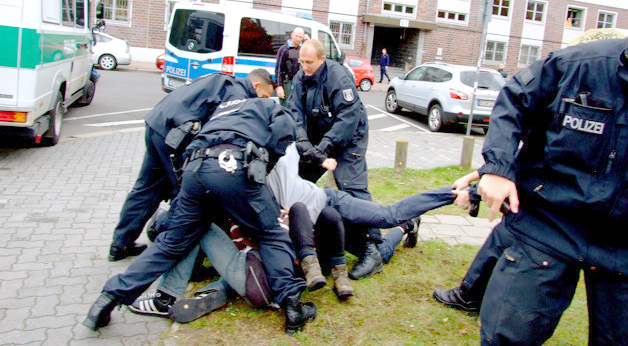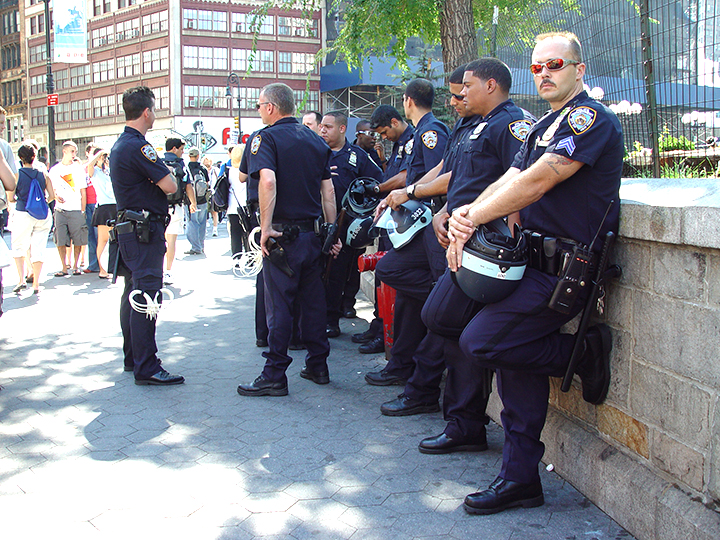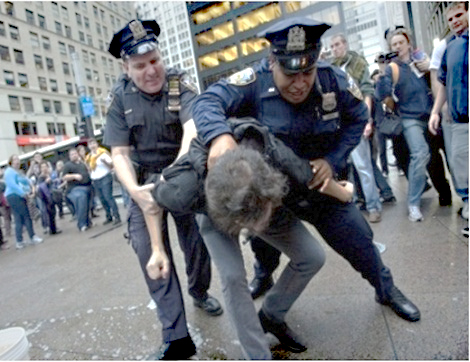Violence among police has become a rapidly occurring topic within communities. Tensions have escalated in some communities and led to protests and sometimes riots.
Sinclair’s Career Communities of Public Safety and Justice and Liberal Arts and Social Sciences hosted University of Cincinnati Professor Todd Callais.
Callais presented a look at his research on police, race and trust in the United States. He included a look at the history of policing and where is it today.
Callais said that he was inspired to do his research by seeing the information that young people were getting after several police shootings.
 “I think it was, to be honest, seeing the online reaction to the Ferguson issues and the Trayvon Martin case,” he said. “Basically, when you would see how the dissemination of information online and the way that especially younger generations were learning about police violence to me was incredibly problematic.
“I think it was, to be honest, seeing the online reaction to the Ferguson issues and the Trayvon Martin case,” he said. “Basically, when you would see how the dissemination of information online and the way that especially younger generations were learning about police violence to me was incredibly problematic.
“When I started to look more and more how hard it was to find reliable data so coming together to actually really spend time and making sure and certifying that things were correct and then trying to get that out there. I think that’s what was important to me.”
According to Callais, police violence is not a phenomenon that has sprung up in the last several years. However, Callais noted that younger generations tend to think of police violence as something new.
“They might think that because these stories come in waves, that this is a new thing… when in reality this is something that we see two to three times a decade,” Callais said.
However, Callais said that this issue is still very current and prevalent.
Dayton Police Commissioner Joey Williams encouraged African Americans to put the history of police violence behind them and encourage young people to join the police.
“At some point we have to let that go and encourage our young people to join because you can’t make change unless you’re in the room,” Williams said.
According to Callais, one of the largest problems police officers still face is that some are still trying the policy of containment.
“We still continue to see disproportionate policing in black, low income neighborhoods,” he said. “Primarily we still the active practice of policing being a containment strategy. What we mean by that is essentially just trying to get people to not exit that neighborhood.
“If there’s problem at all, if there’s violence at all, [police] try to keep it in that neighborhood, so it doesn’t spill out. Where on other neighborhoods they try to focus more on protection.”
One member in a five person panel, Wright State Psychology professor Steven Kniffley, noted that many young children are taught to fear the police when parents use statements such as “If you don’t behave, the police are going to come and arrest you.”
“Kids [make] associations around the age of six years old. Those are pretty much solidified unless there’s an intentional effort made to change. So, while it’s good to [reach out] to these high school kids, but we’re really trying to make a difference with these folks and change their opinions, we have to start engaging with those who are six years old,” he said.
According to Callais, the history of police violence doesn’t mean that police need to evaporate all together, it just needs systematic changes.
“The research shows that we need police,” Callais said. “This isn’t supposed to imply that we don’t. What it means though is that you start to get to a point where you get diminishing return. Where it starts to focus more on strategy and technique as opposed to just a couple of extra police officers out there.”
According to Callais, introducing changes to police procedures is difficult for them to adjust to, just like it would be in any other job.
Some audience members felt frustration over policing in their own community and tried to put a voice to it.
“This gentleman [Callais] just sat and gave an incredible historical perspective on the structural problems of the police and when asked questions by the staff you didn’t talk about how those structural problems affect Dayton specifically,” one woman said.
“He said there were structural problems [with police] in the black community and nobody talks about that. What are the problems facing Dayton with respect to police? Black men don’t become officers because by the time they’re 25, they’ve been stopped 25 times by the police. Stop and frisk may be unconstitutional but it’s happening daily… it’s a systemically racist institution and we need to deal with that.”
Others implored audience members to educate children and hold conversations about what’s on the news with them. He also encouraged people to attend ride alongs.
“There are these opportunities. Nationally, we’re very very low on the scale of how our police and community interact… We need to educate children, talk to them about things we’re seeing on the news even if we disagree with it. Watch television with your child, help them understand why the media has that perspective,” one man stated.
Callais noted in Department of Justice’s report on the Ferguson Police Department that officers issued a high number of citations in black communities, targeting them three times more than white civilians.
Those citations, according to Callais, opened the door to unlawful raids, targeting of communities and, eventually, police shootings.
He also cited new technology and smart phones for a large rise in protests in police shootings.
“We increase focus on this issue every couple of years as it ebbs and flows, but also, it’s probably the fact that this is the first time we have this much video capability,” Callais said.
“We have cases that have been prosecuted of police violence now in the last 18 months that have involved video.”
Callais said that online communication can be a downfall for younger generations and the information they receive.
“But it can also be a group that is so locked into the kind of the simplicity of online communication. It’s not an issue that can be explained through meme culture. So the people who embrace that, I would say tend to be a bit more problematic.”
Callais stated that younger people can be very open to new ideas and learning about things that they might not have before.
“To the general issue, I think that younger people are some of the most open and some of least open people I’ve ever encountered in terms of this particular issue. There are many people who are willing to accept that they may not know as much as they think about the particular issue and listen more,” he said.
Callais gave the reminder that police are human, just under a different kind of microscope.
“Police are human. Surprise. So, police are human, they’re affected by regulations, they’re threatened by changes. They don’t want to be looked at constantly and managed. The problem is they have a unique authority and that’s why we focus on it a bit more.”
Laina Yost
Managing Editor

